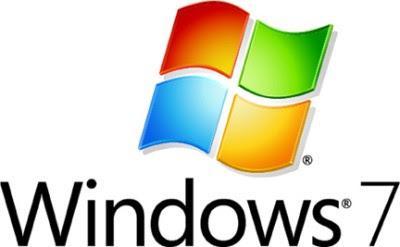Microsoft, in a rather brilliant move, has released an update that checks your OS serial against a list of known leaked serials (corporate edition keys, etc). If your serial matches one of them then it puts a darling little message on the bottom right hand of your login screen, and also a system tray icon that nags you to buy a genuine copy of windows.
It will also pop up a dialog that says “This copy of Windows is not Genuine” “This copy of Windows is not genuine and you have not yet resolved this issue. This computer is no longer eligible to recieve select security upgrades from Microsoft.
To protect your copy of Windows, you must click Get Genuine now.”
Every so often a little balloon will pop up that says “You may be a victim of software counterfeiting.” Below that it will say “This copy of Windows is not genuine. Click this balloon to resolve now.” If you’re working on a system that has this running it gets annoying in a hurry. What the time interval between pop-ups is, I don’t know, but I imagine it’ll drive most people to buy a legit key after a while just to get the thing to shut up.
Fixing the popup is easy enough.
- Reboot to safe mode. Open up HijackThis and scroll down to the selection that says “020 – Winlogon Nofity: Wgalogon – …” select that, and click fix checked.
- You can also go and delete the actual executable that nags you. The full path to it should be (for most installs) C:\Windows\System32\wgatray.exe.
- Reboot after this. No longer should you get the popups and that nagger as you log in should not show up either.
If you have a valid copy of Windows - You can do the following:
- Launch Windows Task Manager.
- End wgatray.exe process in Task Manager.
- Restart Windows XP in Safe Mode.
- Delete WgaTray.exe from c:\Windows\System32.
- Delete WgaTray.exe from c:\Windows\System32\dllcache.
- Launch RegEdit.
- Browse to the following location : HKEY_LOCAL_MACHINE \ SOFTWARE \ Microsoft \ Windows NT \ CurrentVersion \ Winlogon\Notify
- Delete the folder "WgaLogon" and all its contents
- Reboot Windows XP.
In Brief :
- Open system32 - Start/Run/system32 (ENTER)
- Go to wgaTray.exe
- Push Delete on your keyboard (but do not click yes or no)
- Open window task manager (Ctrl+Alt+Del)
- Click processes
- Go to wgatray.exe (press Delete button)
- Now line up the 2 windows that say "yes & no" and then click yes to end the process & also yes to delete in this order
PROBLEM - 2
PROBLEM : You have downloaded windows 7 from Microsoft Official Website in December 2009. On present day, your system is rebooting after 2 hours. What are the solutions available to overcome this problem ?
SOLUTION :
Windows Communications Manager at Microsoft, posted the news on The Windows Blog stating:
For the RC, bi-hourly shutdowns will begin on March 1st, 2010. You will be alerted to install a released version of Windows and your PC will shut down automatically every 2 hours. On June 1st, 2010 if you are still on the Windows 7 RC your license for the Windows 7 RC will expire and the non-genuine experience is triggered where your wallpaper is removed and “This copy of Windows is not genuine” will be displayed in the lower right corner above the taskbar.
This isn’t a new tactic Microsoft has implemented to remind users they need to upgrade and it did the same thing with Vista previews. Windows 7 is expected to release in October this year, but at the very latest will be out by January next year giving you plenty of time to buy a copy before the automatic shutdowns begin.

Windows 7 RC to Have Shutdowns on March 1 '10
Last week the news made the rounds of the Windows 7 RC having a longer than average trial period. Stated clearly by Microsoft is that the Release Candidate install will remain valid until June 1, 2010.
What wasn’t so clearly publicized is the small detail that starting March 1, 2010 there will be bihourly shut downs of any installs of Windows 7 RC.
As Microsoft details on its partner site regarding the shutdown schedules for the beta and RC:
To avoid interruption, it’s recommended that you and your customers rebuild test machines by using a valid Windows operating system before Windows 7 Beta and Windows 7 RC expire. Windows will automatically notify you that the expiration process is about to begin. Two weeks later, your PC will shut down every two hours. For Windows 7 Beta, the bihourly shutdowns will begin July 1, 2009. The software will expire August 1, 2009. For Windows 7 RC, the bihourly shutdowns will begin March 1, 2010. The software will expire June 1, 2010.
So there you have it. While Windows 7 RC will be useful for 13 months as we all thought last week, it’ll be more useful for the first 10 months.
If there’s any confusion regarding what bihourly means – if it’ll be shutdowns every 30 minutes or 2 hours – it’s the longer of the two options, though probably still annoying enough to make one want to upgrade to the final version.
Windows 7 RC is set for a public launch tomorrow. Look forward to it! (Unless you’ve already downloaded it.)
How to stop Windows 7 reboot loop
We know pretty well that Windows 7 is a quite new operating system which is still in its RC version and therefore not ready (at the time writing) for the market and regular not-savvy users. That’s why we should not be surprise if, every now and then it reboots automatically to prevent the computer from being damaged beyond recovery. Such a behaviour is preset by Microsoft and it is triggered upon system failure. Anyway, if you are not a lucky person your Windows 7 may become stuck and therefore enters in a infinite reboot loop, an endless series of turn-off and turn-on loops without any apparent way to get out of it. Let’s s lean how to stop Windows 7 reboot loop thanks to a little trick!
- When your computer starts its next reboot(black screen) , just hit F8 in your keyboard a lot of times till you get the Advanced Boot Options screen.
- Now, with your arrow keys, select Disable automatic restart on system failure and press Enter.
- Well Done.

No comments:
Post a Comment